Moonstruck Videos
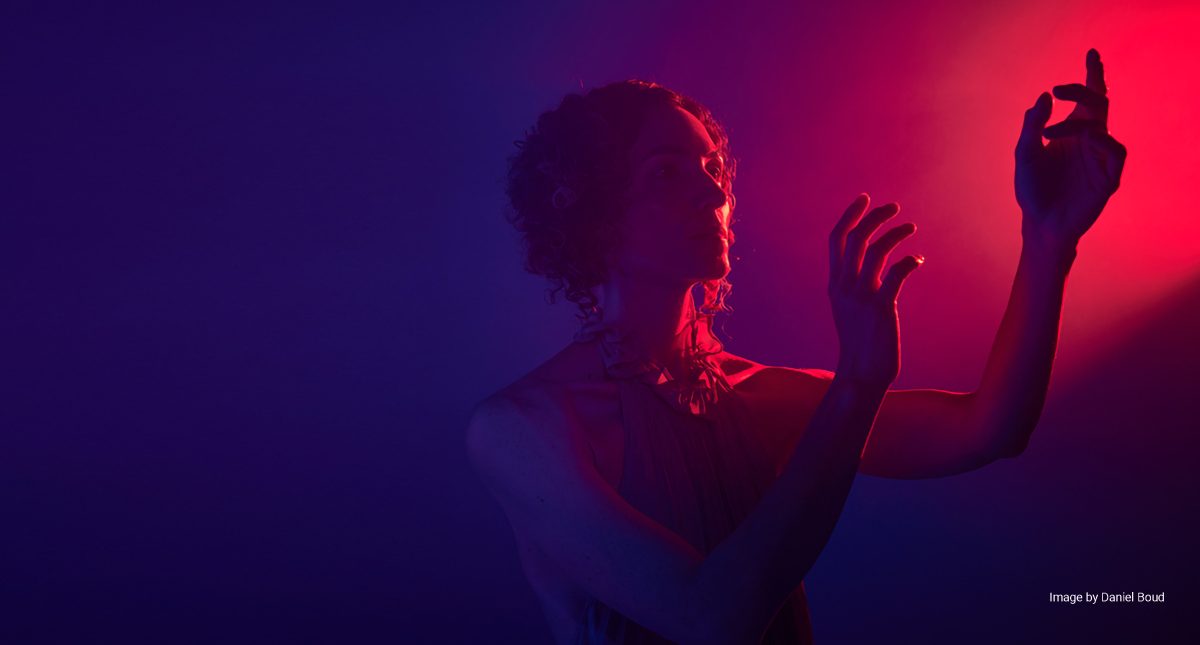

Watch SCO Artistic Director Jack Symonds discuss the program with Ensemble Offspring Artistic Director Claire Edwardes.
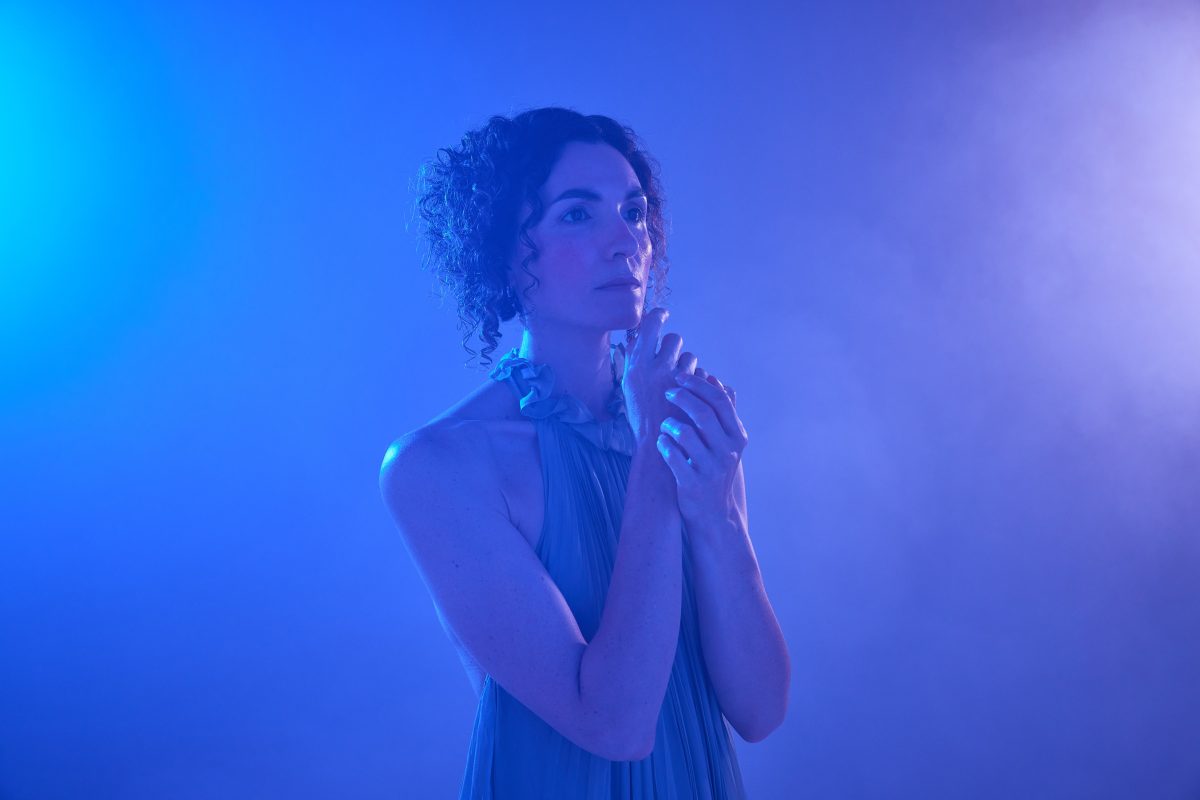
Pierrot lunaire sits somewhere between cabaret and concert, acting and singing, madness and depravity. Showcasing the extraordinary talents of soprano Jane Sheldon, it flirts with chaos as Arnold Schoenberg translates each tiny poem into music. It’s over a hundred years old, but it remains radical to the ear – a revolutionary classic that transformed music and concerts forever, just as Cubism changed painting. Even Ensemble Offspring’s distinctive line-up of musicians can be traced to this iconic creation and its grungy tale of the ‘moonstruck’ clown of commedia dell’arte.
In a one off staged performance at Eugene Goossens Hall presented in association with Sydney Chamber Opera, Pierrot lunaire will be directed by Eugene Lynch and feature the incredible physicality of Mitchell Riley. In response, ‘triple threat composer-performer provocatrice’ Laura Bowler (UK) has created a long-form fresh interpretation of Albert Giraud’s poems, deconstructing and repurposing Schoenberg’s original musical material, viewing it through a contemporary queer lens in ‘a subversive act of defiance of the great master’. International star mezzo-soprano Jessica Aszodi, one of the “finest actress-singers in the country” (The Age) join us for the virtuosic challenge of Schoenberg’s reimagined vocal lines.
Bowler’s work is co-commissioned by Ensemble Offspring, Red Note Ensemble (Scotland), and Music on Main (Canada).
NB SCO’s Staged version of Pierrot lunaire in Sydney only.
Jane Sheldon: Vocals
Jessica Aszodi: Vocals
Eugene Lynch: Director – Pierrot lunaire only
Lamorna Nightingale: Flute
Jason Noble: Clarinet
Véronique Serret: Violin
Blair Harris: Cello
Jack Symonds: Piano
Claire Edwardes: Percussion
Benjamin Carey: Electronics
Mitchell Riley: Actor – Pierrot lunaire only
September 2025
Fri 26 Sep – 6:30 PM
The Street Theatre Canberra
Sun 28 Sep – 3:00 PM
Eugene Goossens Hall, ABC Ultimo Centre
Pre-concert talk – 2:15 PM
with Vanessa Hughes (ABC Classic Drive), Claire Edwardes and Jack Symonds
Schoenberg: 35 mins
Interval: 20 mins
Bowler: 45 mins
From $39-$89
Click here for ticket link
© 2020 Sydney Chamber Opera | Site designed & built by Anderson Chang

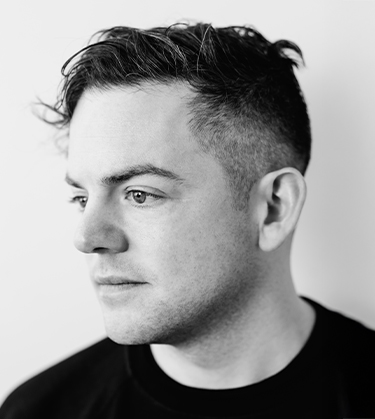
Nico Muhly (b. 1981) has composed music for the Metropolitan Opera (Two Boys, 2011, and Marnie, 2018), for the New York, Los Angeles and Berlin Philharmonics and the San Francisco Symphony (where he was creative partner), and for stage, film (including The Reader, 2008), and television dramas (including Pachinko, 2022-2024).
His works have been performed by the choirs of Westminster Abbey, King’s College Cambridge, and Sidney Sussex College Cambridge, where he is composer-in-residence, and the Tallis Scholars. He has collaborated with musical artists Anohni, Björk, James Blake, The National, Paul Simon, and Sufjan Stevens, choreographers Kyle Abraham, Benjamin Millepied, Mark Morris, and Justin Peck, and visual artists Maira Kalman, Yu Hong, and Oliver Beer.
He has written vocal works for Anthony Roth Costanzo and Renée Fleming, as well as concerti for violist Nadia Sirota, organist James McVinnie, violinist Renaud Capuçon, trumpeter Tine Thing Helseth, and pianists Katia & Marielle Labèque. His large-scale instrumental solo works include The Street for harpist Parker Ramsay, with text by Alice Goodman, and The Bell Études for pianist Conor Hanick. He has released recordings on Decca and Nonesuch, and as a founding member of the artist-run Bedroom Community label.
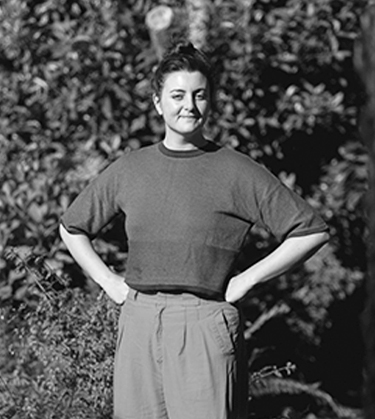
Laura Lethlean an Australian playwright. Her award-winning plays have been programmed at theatres and festivals across Australia and New Zealand.
Laura’s play, Two Hearts, was published by Australian Plays Transform and produced in Sydney (Kings Cross Theatre, 2018), Melbourne (One Act Play Festival, 2019) and then back in Sydney (Flight Path Theatre, 2025).
Laura’s other produced plays include Plastic Pacific (the Substation, 2013), The Space Between the Fuel and The Fire (NIDA, 2016), Fading (Canberra Theatre Centre/CYT, 2018), The Three Graces (Theatre Works 2019), and Pillow Fight (Gasworks, 2022). Pillow Fight won the Tour Ready award at the Melbourne Fringe Festival, which took the production to New Zealand Fringe and Castlemaine Arts Festival in 2023. Laura’s commissions include Honey for The National Drama School, Aphrodite for Sydney Chamber Opera, and The Cockatoo the Victorian Seniors Festival.
Laura trained at NIDA, receiving a Master of Fine Arts in Writing for Performance in 2015. Laura is an alumnus of ATYPs Fresh Ink, The National Studio, and TheatreWorks’ She Writes programs. Through programs such as these, Laura has benefited from the mentorship of pioneering Australian playwrights such as Patricia Cornelius, Angus Cerini, and Robyn Archer (AO).
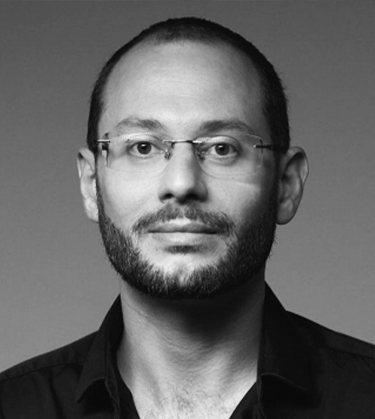
Jack Symonds is a composer, conductor and pianist, and Artistic Director of Sydney Chamber Opera. He studied composition at the Royal College of Music, London under Kenneth Hesketh and at the Sydney Conservatorium of Music where he received the University Medal. His stage works represent “a striking and impressive new operatic voice” (Sydney Morning Herald) and he is “one of those performers who seemingly can play anything” (Australian Book Review).
He specialises in the performance of new music, including conducting and playing major stage works by Britten, Benjamin, Janáček, Dusapin, Kurtág, Saariaho, Maxwell Davies, Kancheli, Rihm and has given world premieres of operas by Gyger, Finsterer, Smetanin, & Ricketson.
His recent performances have shown “masterly musicianship, projecting an engrossingly cogent understanding of complexities and expressive purpose” (SMH), the ability to “draw an emotional throughline so clear that every unexpected melodic or dynamic turn feels comfortable and logical” (Timeout), and is “impressive as ever at the piano, creating a vital palette of carefully gradated tone colours.” (Backtrack).
He has performed in and made work for the Holland, Tokyo, Sydney, Melbourne & Adelaide Festivals, Opera Australia, Dark MOFO, Sydney Opera House, Biennale of Sydney, Carriageworks, Melbourne Recital Centre, National Gallery of Australia, among many others.
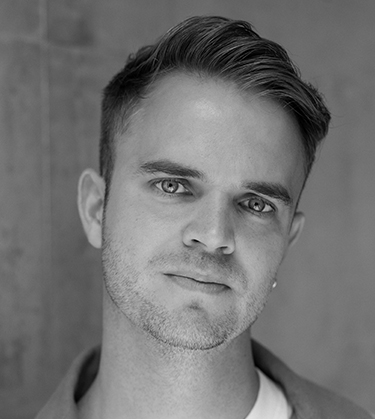
Alexander Berlage is a multi-award-winning director and lighting designer.
Alexander’s acclaimed production of A STREETCAR NAMED DESIRE won 4 Sydney Theatre Awards including Best Independent Production and Best Direction of an Independent Production. His smash-hit, sold-out production of AMERICAN PSYCHO won 9 Sydney Theatre Awards including Best Direction of a Musical and Best Production of a Musical.
Alexander’s production of CRY-BABY sold out and won 4 Sydney Theatre Awards including Best Direction of a Musical and Best Production of a Musical. He has twice won the Sydney Theatre Award for Best Lighting Design of an Independent Production – for his work on AMERICAN PSYCHO and on 4:48 PSYCHOSIS.
Directing credits include WOMEN ON THE VERGE OF A NERVOUS BREAKDOWN YOUNG (with Pinwheel Productions), FRANKENSTEIN, AMERICAN PSYCHO, CRY-BABY (at Hayes Theatre Co); LET THE RIGHT ONE IN (Darlinghurst Theatre Co.); for FUTURE REMAINS (with Sydney Festival), EARTH.VOICE.BODY, RESONANT BODIES (Sydney Chamber Opera); GLORIA (Outhouse Theatre Co); for A STREETCAR NAMED DESIRE, HAND TO GOD (Red Line Productions).
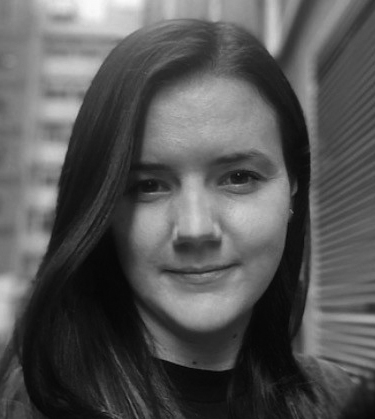
Isabel Hudson is an award-winning set and costume designer. Isabel holds a Bachelor of Design from NIDA and a Bachelor of Arts from the University of New South Wales. She is a lecturer at NIDA.
Selected credits include – A FOOL IN LOVE, CONSTELLATIONS, HUBRIS AND HUMILIATION (Sydney Theatre Company) – TORCH THE PLACE set (Melbourne Theatre Company) – MASTER CLASS (Ensemble Theatre) – NUCLEUS, JAILBABY (Griffin Theatre Company) – BLESSED UNION, WINYANBOGA YURRINGA (Belvoir) – DEAR EVAN HANSEN (Michael Cassel Group) – YOUNG FRANKENSTEIN set, AMERICAN PSYCHO set (Hayes Theatre Co) – THE MOUSETRAP costume (Crossroads Live).
For Global Creatures, Isabel is associate set designer for MOULIN ROUGE Australia, Korea, and Japan; for Opera Australia, assistant designer for MERRY WIDOW and MY FAIR LADY – and for Sydney Theatre Company, associate designer on FUN HOME directed by Dean Bryant. Isabel has won four Sydney Theatre Awards for her outstanding designs – best set design for CONSTELLATIONS, AMERICAN PSYCHO, and CRY-BABY, and best costume design for HUBRIS AND HUMILIATION. She also won an APDG award for best set design for AMERICAN PSYCHO.

Morgan Moroney is a lighting and video designer working across theatre, opera, dance and installation. Growing up on Kaurna land, he currently lives and works primarily on Gadigal land. He brings a distinct multidisciplinary approach to his practice, with a particular fascination for integrated-media live performance.
Recent work: AUGUST: OSAGE COUNTY (Belvoir & Black Swan), SONG OF FIRST DESIRE, NAYIKA: A DANCING GIRL (Belvoir), DIDO & AENEAS (Pinchgut), QUEEN’S NANNY, SUDDENLY LAST SUMMER, CLYDE’S (Ensemble), BARBER OF SEVILLE (Opera Australia) TURN OF THE SCREW (Hayes), SHITTY (Belvoir 25A), CLEANSED (Redline), INFERNO (Australian Brandenburg Orchestra), ANATOMY OF A SUICIDE (Sugary Rum), THE DRY and THE WET (Circa Cairns), SAPLINGS, SHACK (ATYP) and COLLAPSIBLE (essential workers), which he also co-directed.
Training: NIDA. Awards: 2020 APDG Emerging Designer for Live Performance (GHOSTS), 2023 Sydney Theatre Award in Best Independent Lighting Design, NIDA X Storytelling Futures Grant (COLLAPSIBLE), 2023 APDG Award in Lighting Design (CLEANSED), 2024 Michael Northen Award, administered by the Association for Lighting Production and Design in the UK.
Morgan’s assistant and associate designer work with Nick Schlieper includes DRACULA (Sydney Theatre Company), PHANTOM OF THE OPERA ON SYDNEY HARBOUR (Opera Australia). Morgan is one half of independent theatre contingent essential workers.
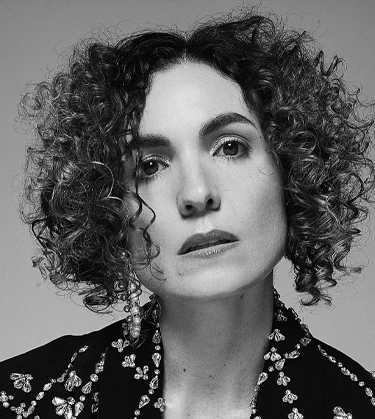
Jessica O’Donoghue is one of Australia’s most compelling vocalists and contemporary music makers, known for her magnetic stage presence, genre-defying artistry, and deep storytelling instincts. Classically trained (University of Sydney, VCA), she began her career as a Young Artist with Opera Queensland and London’s Royal Opera House before carving out a singular path across opera, experimental music, and beyond.
Jessica is Co-Artistic Director of The Song Company and a frequent principal artist with Sydney Chamber Opera. She collaborates closely with leading composers, premiering roles in works by Mary Finsterer (Antarctica/Biographica), Huw Belling (Fumeblind Oracle), Andree Greenwell (Three Marys), Peggy Polias (Commute) and Jack Symonds (Gilgamesh).
Celebrated for her “tour de force of dramatic range” (SMH), Jessica’s accolades include an APRA/AMCOS Art Music Award for ‘Performance of the Year’, an AIM Fellowship, and finalist for the 2024 AWMA Opera Australia Impact Award. She also releases acclaimed solo albums blending classical, pop, and experimental styles. Rise Up (2022), a striking fusion of classical, pop, and experimental sound worlds, was a finalist for Album of the Year at the international ProgSpace Awards.
Jessica is completing a PhD in composition at Sydney Conservatorium of Music under supervisors Liza Lim and Paul Stanhope. Her first opera, Menarche, premiered in 2024, followed by Running Man for 2026/2027.
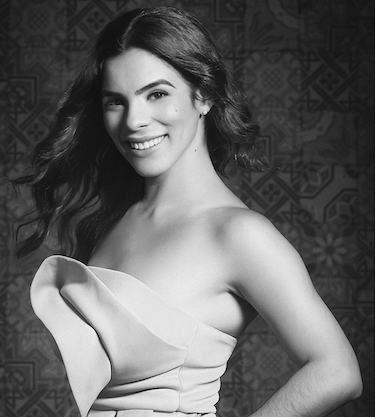
Meechot Marrero, soprano, has been hailed as “a revelation…a young Puerto Rican star with a great career ahead” (El Nuevo Día). She is a frequent guest at Deutsche Oper Berlin, where her repertoire includes Gretel (Hänsel und Gretel), Frasquita (Carmen), and The Vixen (The Cunning Little Vixen).
In 2024–2025, she performs Carmina Burana with the Oakland and Grand Rapids symphonies, returns to Deutsche Oper Berlin, and makes her role debut as Nuria in Golijov’s Ainadamar at the Casals Festival. Other recent highlights include appearances with Opera San Antonio, the Royal Opera House Muscat, and multiple concerts under Sir Donald Runnicles.
Marrero made her debut as Cunegonde in Candide at Komische Oper Berlin and has also sung Maria in West Side Story, Adina in L’elisir d’Amore, Musetta in La Bohème, and Liù in Turandot across Europe and the U.S.
A native of Corozal, Puerto Rico, she is a graduate of the Puerto Rico Music Conservatory and Yale School of Music. She began her musical journey with the San Juan Children’s Choir and is a recipient of both the Schuyler Foundation’s Career Bridges Grant and the Phyllis Curtin Prize.
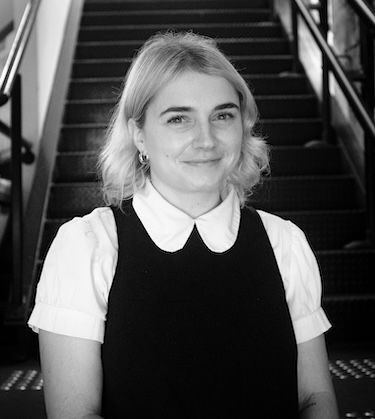
Zoë is a Director and Creative Producer who has worked across a range of organisations including Belvoir, Performance Space, Performing Lines, Perth Institute of Contemporary Arts and Black Swan State Theatre Company. She holds a Bachelor of Performing Arts from the Western Australian Academy of Performing Arts (WAAPA) and a Master of Fine Arts (Directing) from the National Institute of Dramatic Art (NIDA). Zoë runs essential workers, a Sydney-based Performance Making Group.
Selected works include – As Director – Pity (Belvoir), The Changelings (PACT), Shitty (Belvoir 25a) The Writer (NIDA), Collapsible (The Old Fitz), Antigonick (NIDA), Cotton Wool Kid (STCWA). As Associate: I Watched Someone Die on Tik Tok (STCWA). As Producer – Amber (The Old Fitz), The Comprehensive A-Z of Missing Persons Australia (WAYTCo), Never Closer (Belvoir), Horses (Belvoir 25a), All His Beloved Children (KXT), Trash Pop Butterflies Dance Dance Paradise (MKA), Slutdrop (PICA). Awards – NIDA X Storytelling Futures Grant, 2024 recipient of The Glorias Fellowship, completing an attachment with The Wooster Group (NYC) under the mentorship of Elizabeth LeCompte.
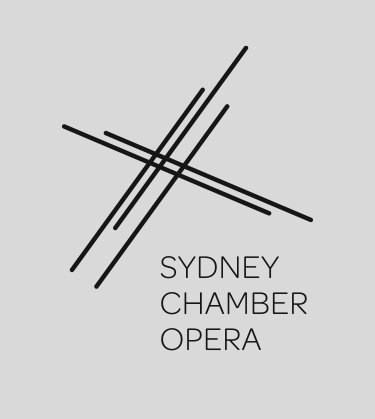
Resident company at Carriageworks, Sydney Chamber Opera, is a fresh and youthful answer to some of the difficult questions facing today’s opera industry. As one of “Australia’s most innovative arts groups” (Sydney Morning Herald) we have “redefined operatic performance in Australia” (Australian Book Review) to show “an astonishing new vision of what contemporary Australian opera can achieve” (Time Out).
Louis Garrick and Jack Symonds established SCO in 2010 and it has rapidly developed into an important and distinctive voice in the Australian music and theatre landscapes. SCO is critically acclaimed for its innovative programming, musical rigour and strong focus on compelling theatre-making. SCO makes opera with a 21st century outlook that resonates with a new, younger audience, and that shows how vibrant and relevant the artform can be. Its program aims for a balance of specially commissioned work by leading homegrown composers, the latest international operas in their Australian premieres, song cycles and cantatas in unusual stagings, and canonical repertoire reinvigorated by the country’s most daring theatrical talent.
SCO has fostered a deep engagement with a wide range of artists across music, text, design, and theatre at the intersection of many cultural practices, and has a unique methodology where it approaches opera as chamber music – where each individual has equal responsibility for their part – a prerogative that it extends to all creatives.
SCO has given the world or Australian premieres of major stage works by Benjamin, Britten, Dusapin, Finsterer, Gyger, Kancheli, Kurtág, Ricketson, Romitelli, Saariaho, Smetanin, Styles & Symonds, and has also been presented by the Holland Festival, Tokyo Festival, Sydney Festival (eight times), Biennale of Sydney (twice), Melbourne Festival and Dark MOFO among others.
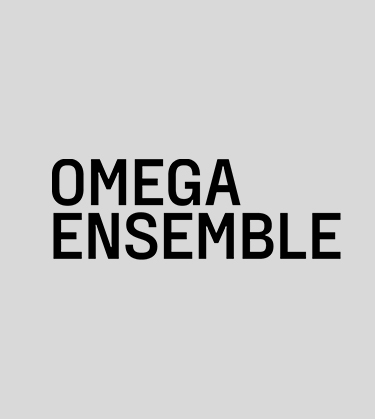
Hailed as ‘the best classical group in town’ (Sydney Morning Herald) and ‘Australia’s most exciting and forward-thinking ensemble’ (Limelight), Omega Ensemble is one of Australia’s most dynamic classical music groups.
The ensemble has received multiple accolades, including Performance of the Year (2023) and the National Luminary Award for Excellence (2024) at the APRA AMCOS Art Music Awards.
At the heart of its success is the musical talent it supports including collaborations with guest artists such as cellist Umberto Clerici, violinist Thomas Gould, didgeridoo virtuoso William Barton and clarinetist Michael Collins, as well as projects with Sydney Dance Company, Sydney Chamber Opera and Sydney Festival.
Omega Ensemble proudly stands at the forefront of new musical expression, commissioning and premiering works by leading composers including Nico Muhly, Holly Harrison, Dr Lou Bennett, Graeme Koehne, Caroline Shaw, Peter Gregson, Elena Kats-Chernin, Carl Vine, Brenda Gifford, Paul Stanhope and Ross Edwards.
Collaboration and musical storytelling also defines the ensemble’s important work off the stage, including its flagship CoLAB: Composer Accelerator Program and ongoing projects with young people across regional and greater metropolitan communities.
© 2020 Sydney Chamber Opera | Site designed & built by Anderson Chang
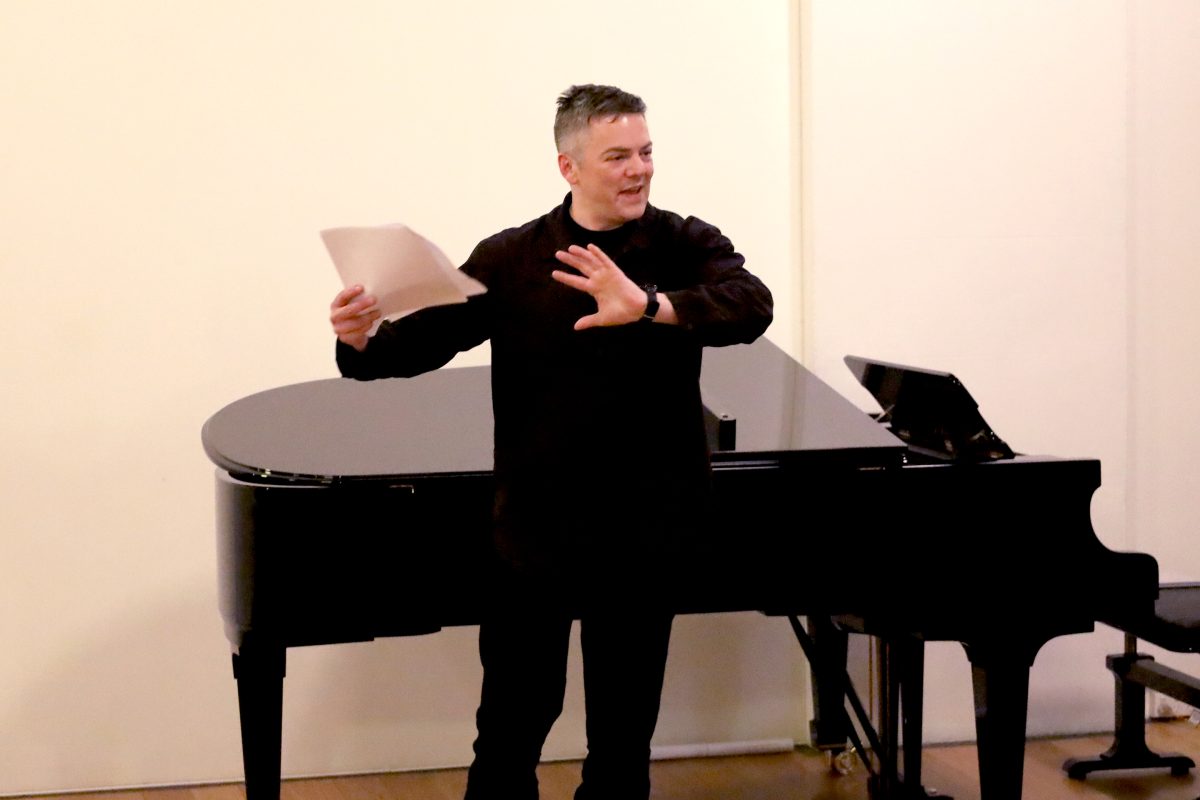
Aphrodite is your fourth opera. Your first opera, Two Boys, has been described as the “love-child of John Adams and [Benjamin] Britten”. Are there any composers or parts of the opera canon that have specifically inspired the music of Aphrodite?
My goodness, I feel like I hadn’t quite heard that description but I’m not entirely mad at it. In fact, I would argue that genetic material from Britten and Adams permeate much of Aphrodite as well. If I were doing a forensic analysis, I would say that you hear a fair amount of Sondheim, particularly in the last fifteen minutes, as well as other things that slipped in there unnoticed.
Opera is full of ‘takes’ on mythology. You have recently created an orchestration/realisation of Monteverdi’s l’Orfeo. What has engaging with Monteverdi’s work at so deep a level revealed to you about the possibilities for [re]creating myths through the medium of music drama?
Orchestrating l’Orfeo for modern instruments was, in some senses, attempting to reinforce Monteverdi’s brilliant music with colour; I never wanted to get in the way of his brilliant use of chromaticism or the pacing of the work, the subtly calibrated disposition of the dances and arias. Strangely, in the same 18 months or so, I saw Matthew Aucoin’s Eurydice and Gluck’s Orfeo ed Euridice; rather a surfeit of the same myth! The good news about Laura Lethlean’s libretto is that the actual “story” of Aphrodite is buried in it almost as a given; we breeze over her biography in favour of understanding the effect of the myth on a specific woman living in modern times. In this sense, I felt quite liberated (as, I trust, did Laura) to try to conjure specific mythological elements through highly stylised gestures (as we find in Stravinsky’s Oedipus rex), but instead through longer, more considered laments and arguments which Laura’s text suggested. In this sense, Purcell’s Dido & Æneas is a closer ancestor.
"With only two people on stage and seven in the pit, everybody has to pull their weight! Sometimes with grand opera there are almost too many tools in the toolbox and the orchestration process becomes a puzzle or a game of Jenga."
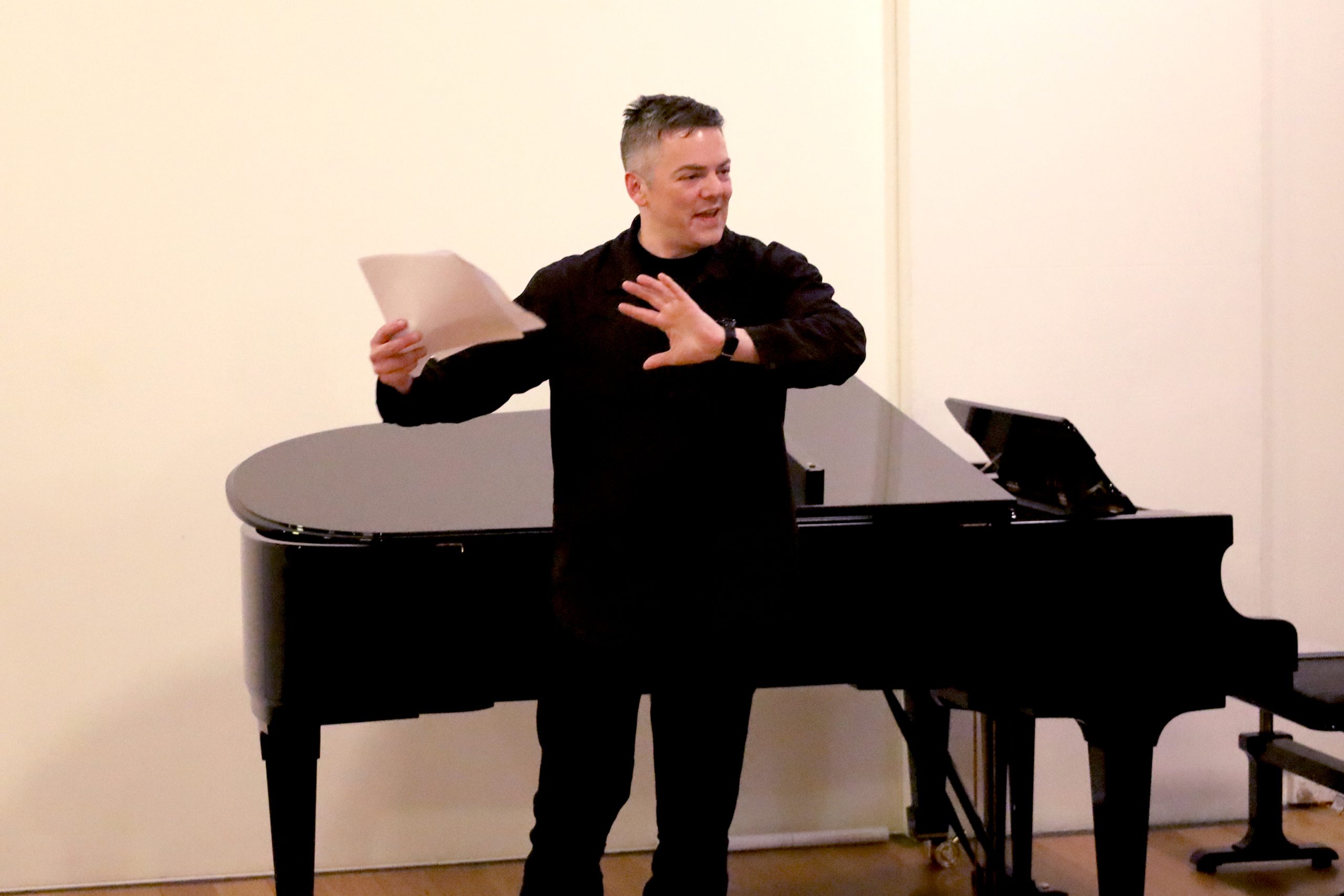
What are the challenges and gifts of writing a chamber opera vs. an opera for full orchestra, chorus and numerous soloists? How does the limitation of solo instrumental parts and voices influence the way you compose?
The instant I knew that Omega ensemble would be the pit band, as it were, I immediately knew exactly how the ensemble would function. They come in and out of focus; I’d argue that they perform a traditional accompagnando role about a quarter of the time, but in most cases, they “know” more about what’s happening on the stage than Jess O’Donoghue (playing Ava).
I tailored the part on Jess, but in some ways left her a minimum of interpretative clues (for instance, there are very sparse dynamics in her part), as I knew she, as a composer, curatrix, and producer, would and should bring a lot of her own instincts to the work. Meechot Marrero, a new collaborator for me, instantly stepped into the complicated and intense role of Aphrodite. With only two people on stage and seven in the pit, everybody has to pull their weight! Sometimes with grand opera there are almost too many tools in the toolbox and the orchestration process becomes a puzzle or a game of Jenga.
How do collaborations, such as with the Aphrodite librettist Laura Lethlean and director Alexander Berlage, shape the composition process? How can words and stage imagery influence abstract musical decisions?
This was an interesting process because Laura and Alexander and I only got together in a room one time. Having Alex intimately involved in the process from the jump meant that the dramaturgic language (both in terms of dramatic flow and the visual language) co-developed with the text and the music, which has its challenges but mainly enormous benefits. We all agreed on a loose structure of the libretto (a dozen or so sections and then Laura went away and started writing and I started sketching out gestures — no notes or rhythms but shapes. Then, when the text arrived — as is always the case — most of it set like a dream and it was obvious to me what to do. The real fun came with trying to recode Laura’s subtle and sly reversal of roles for the two characters in a way which was musically satisfying but also suggestive rather than prescriptive to Alex.
© 2020 Sydney Chamber Opera | Site designed & built by Anderson Chang
SCO is proud to announce director and lighting designer
Alexander Berlage as 2025 Resident Artist.
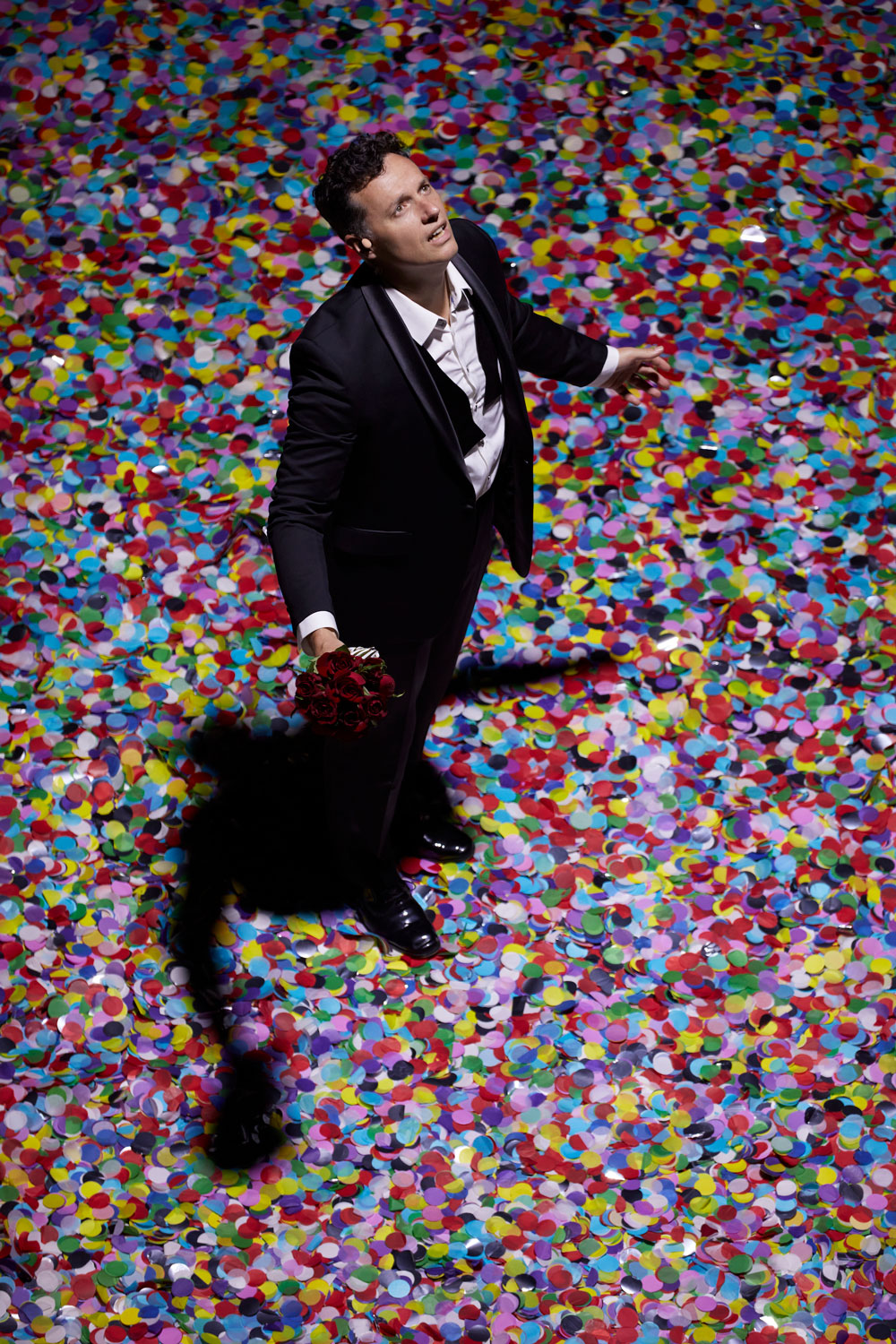
His skill in both directing and lighting inspired SCO to use Alexander in these two roles on an increasingly ambitious basis. He directed SCO’s 2020 Diary of One Who Disappeared for the Sydney Opera House’s digital series, which grew into a live presentation in 2021 Sydney Festival, Future Remains. In 2022, he lit the international co-presentation of Antarctica in the Holland Festival and Awakening Shadow at Carriageworks. After creating a stunning mise-en-espace for the Art Gallery of NSW in January for Cloud Music, Alexander will now direct and light Muhly’s Aphrodite. Over a period of ten years, SCO has sustained and supported the career of this major NSW artist and deepened his skills and collaborations across two theatrical disciplines.
The Diary of One Who Disappeared, Image by Craig Wall
© 2020 Sydney Chamber Opera | Site designed & built by Anderson Chang

By Nico Muhly & Laura Lethlean
World Premiere
Presented by Sydney Chamber Opera & Carriageworks in association with Omega Ensemble
Composer
Nico Muhly
Libretto
Laura Lethlean
Conductor
Jack Symonds
Director & Lighting Designer
Alexander Berlage
Set & Costume Designer
Isabel Hudson
Video Designer
Morgan Moroney
Assistant Director
Zoë Hollyoak
Singers
Jessica O’Donoghue
Meechot Marrero
June 2025
Fri 20 Jun – 7:00 pm
Sat 21 Jun – 3:00 pm
Thu 26 Jun – 6:30 pm
Fri 27 Jun – 6:30 pm
Sat 28 Jun – 3:00 pm
Carriageworks
Bay 20
245 Wilson St Eveleigh
NSW 2016
Approximately 60 minutes, no interval
from $45 – $60

Composer Jack Symonds’s journey to composing this vast new work.
© 2020 Sydney Chamber Opera | Site designed & built by Anderson Chang
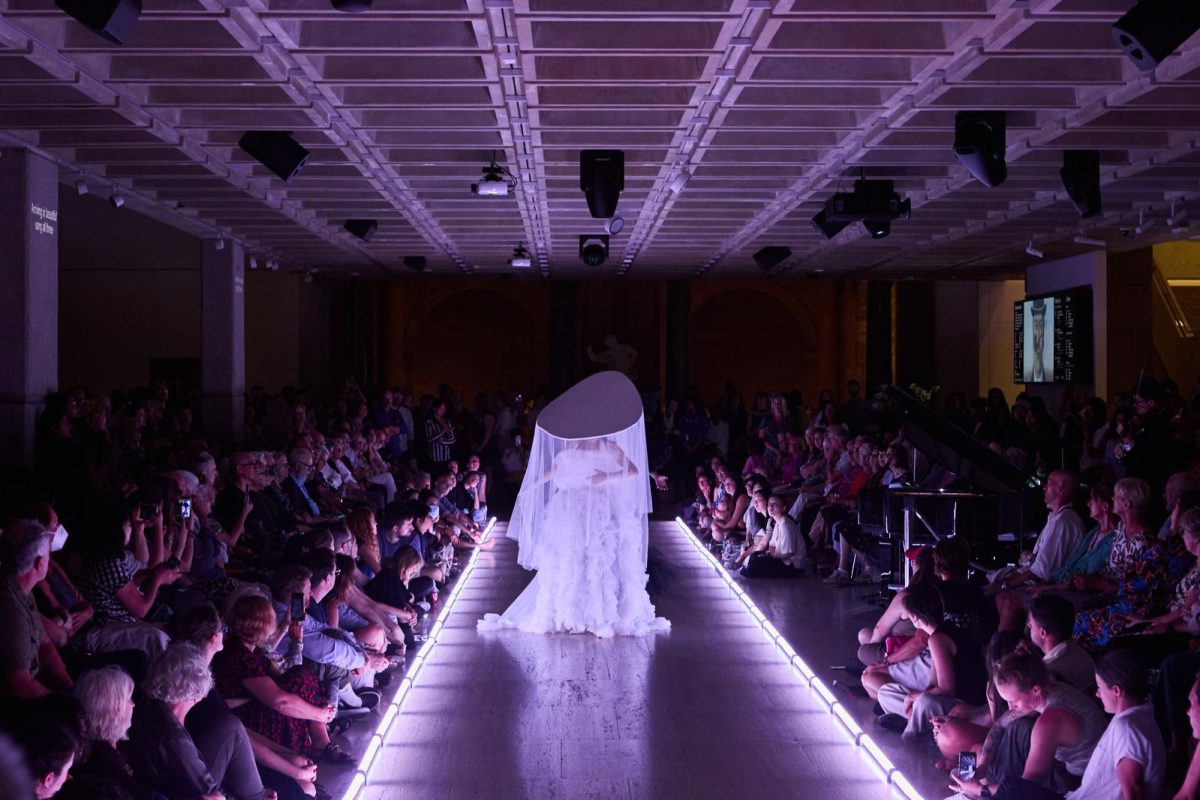
SYDNEY FESTIVAL 2025
Hear ethereal musical clusters, floating tones and swathes of spacious sound in this music series inspired by the symbolism of clouds.
Presented alongside the Magritte exhibition at the Art Gallery of New South Wales, Cloud music sees SCO artists create a unique one-night only performance aligned to the art of Belgian surrealist painter René Magritte.
Hosted in the Art Gallery’s atmospheric Kaldor Hall SCO’s response is an hour-long mise-en-espace designed and directed by Alexander Berlage which features the world premiere of new works by Jane Sheldon as well as the Australian premiere of excerpts from Thomas Adès’s The Exterminating Angel.
Program:
Thomas Adès: Three Berceuses from The Exterminating Angel (Australian premiere)
Jane Sheldon: Apollo & The Erotic Sublime (world premieres)
Pascal Dusapin: Wolken
Thomas Adès: Life Story
Mise-en-espace
Alexander Berlage
Costume Designer
Brendan de la Hay
Sound Designer
Matthew McGuigan
Singers
Jane Sheldon
Jessica O’Donoghue
Instruments
Jack Symonds: piano/theremin
Christopher Cartlidge: viola
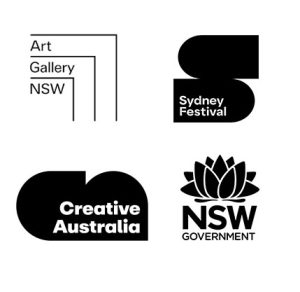
Supported by Rowena Danziger AM
15 January 2025
8:00 – 9:00pm
Art Gallery of NSW
Naala Nura (south building)
Ground level, Kaldor Hall
Approximately 1 hour
FREE
© 2020 Sydney Chamber Opera | Site designed & built by Anderson Chang
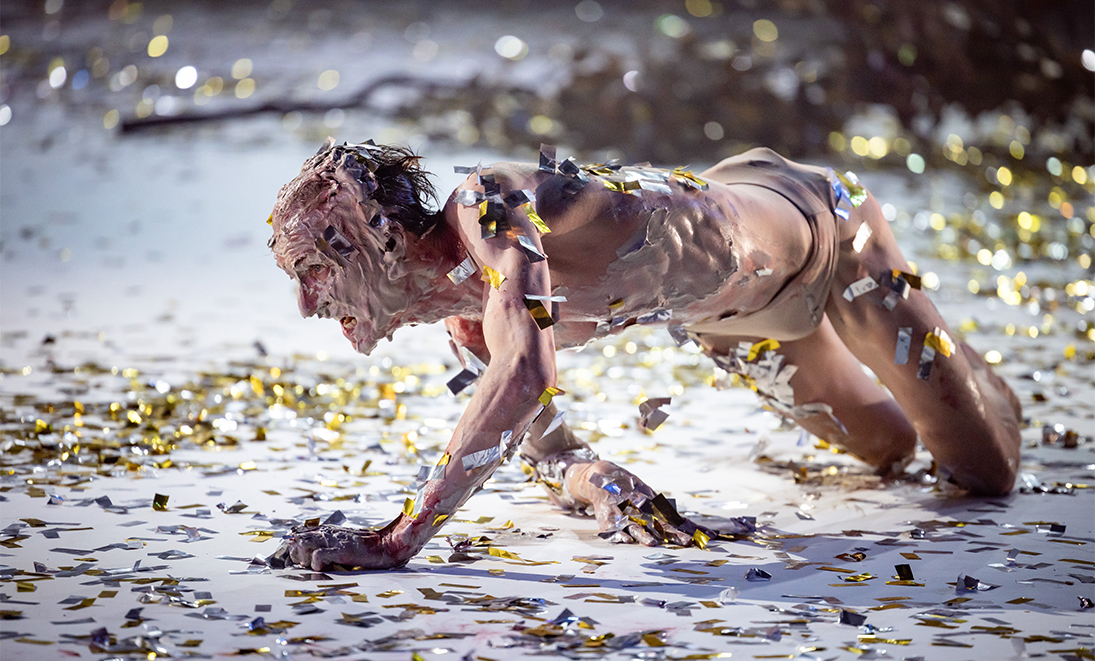
By Jack Symonds
The compositional journey to writing Gilgamesh as a full-length opera was a protracted one. At most points in the process the whole thing could have fallen over or spun off into another project, yet I was determined to shape this unruly narrative into an evening’s worth of music-drama using everything I had to give as a composer.
But how?
For a long time I was only familiar with the Epic of Gilgamesh itself through refraction and adaptation. At school, I read Michael Ondaatje’s novel In the Skin of a Lion, its very title referencing one of the most iconic Gilgamesh images: a humbled king roaming the desert in lion skins searching for the answers to life and death. It was the first time I’d heard of The Epic, yet I only knew enough of its basic premise to make sense of Ondaatje’s use of it as the novel’s title and epigraph.
Soon after, I heard Czech composer Bohuslav Martinů’s oratorio The Epic of Gilgamesh, which was much more my style. I have always loved the late music of Martinů and this piece is one of the largest and most ambitious in his final decade. Martinů is, however, very selective with what he includes in this hour-long work. It focuses almost exclusively on the characters of Gilgamesh and Enkidu with only the briefest mention of, or cameos for, any other sung characters. This is, however, a very valid way of adapting the Epic. It is such a discursive, sprawling narrative that zeroing in on this aspect suited well Martinů’s late-period combination of starkly hieratic post-Stravinsky Oedipus Rex choral writing with a highly refined post-Impressionist shimmer.
My interest was well and truly piqued however, by the extraordinary final song of French Spectral pioneer Gérard Grisey’s Quatre chants pour franchir le seuil. In Grisey’s last work before his untimely death in 1998, the ultimate song ‘for crossing the threshold’ is a setting of the Flood narrative from the Epic of Gilgamesh. It is a vision of an apocalyptic flood engulfing the entire earth before leaving ‘all of mankind returned to clay’. I found that image unbelievably powerful in Grisey’s profound and visionary setting, so it finally pushed me to become familiar with the Epic itself.
It was as far back as 2017 that Louis Garrick, my friend and colleague who began Sydney Chamber Opera with me, proposed that we write an opera together on the Epic of Gilgamesh with himself as librettist, me as composer. Thinking back now, there’s simply no way I could have even conceived of writing it at that stage in my life, but the idea wouldn’t leave me alone. Nothing happened for ages, but it was about three years later that musical ideas relating to the Epic began to form in my mind and I started to take the subject seriously as a composer, imagining music that could tackle vast distances, character arcs and themes. Even then, it was slow going, but I used no fewer than six separate composition commissions from different organisations throughout 2019- 2022 to get the material for the opera worked up in various forms. Without this preparation, there’s simply no way I could have started from bar 1 and finished at bar 2460 as a single act of creation.
I view the whole span of my composing life from 2019 until 2024 as the ‘Gilgamesh’ period, where every work, no matter how big or small contributed immeasurably to the opera.
The final movement of a flute concerto I wrote for Ensemble Offspring and its flautist Lamorna Nightingale between 2019 and 2020 was the first fully-realised and performed music that made the final cut of the opera. You’ll hear this at the beginning of the last scene as a depiction of Gilgamesh and the boatman Ur-Shanabi rowing across the Waters of Death to reach the immortal human Uta-Napishti. A slow, woozy melody in the bass flute is endlessly reflected in a pool of microtonal ripples, attempting to find an end to its searching. I was very pleased with this part of the flute concerto and knew that if the opera ever saw the light of day, it would have to be a feature. The harmonic implications from just a few of these ‘ripples’ are refracted back into the Prelude of the whole opera and form question marks that punctuate its narrative.
In fact, the Prelude holds the musical ‘potential’ of the whole opera – as Enkidu is created by the Gods out of clay, so too is the world of harmony and timbral associations which will eventually form the mysteries and revelations several hours later. Composing it, I came to realise that a whole Gilgamesh-specific musical grammar had to be made which could be capable of adapting, continuing, rejecting, renewing or reinventing the practices of almost half a millennium of operatic writing as needed by this extraordinary story…
I view the whole span of my composing life from 2019 until 2024 as the ‘Gilgamesh’ period, where every work, no matter how big or small contributed immeasurably to the opera.
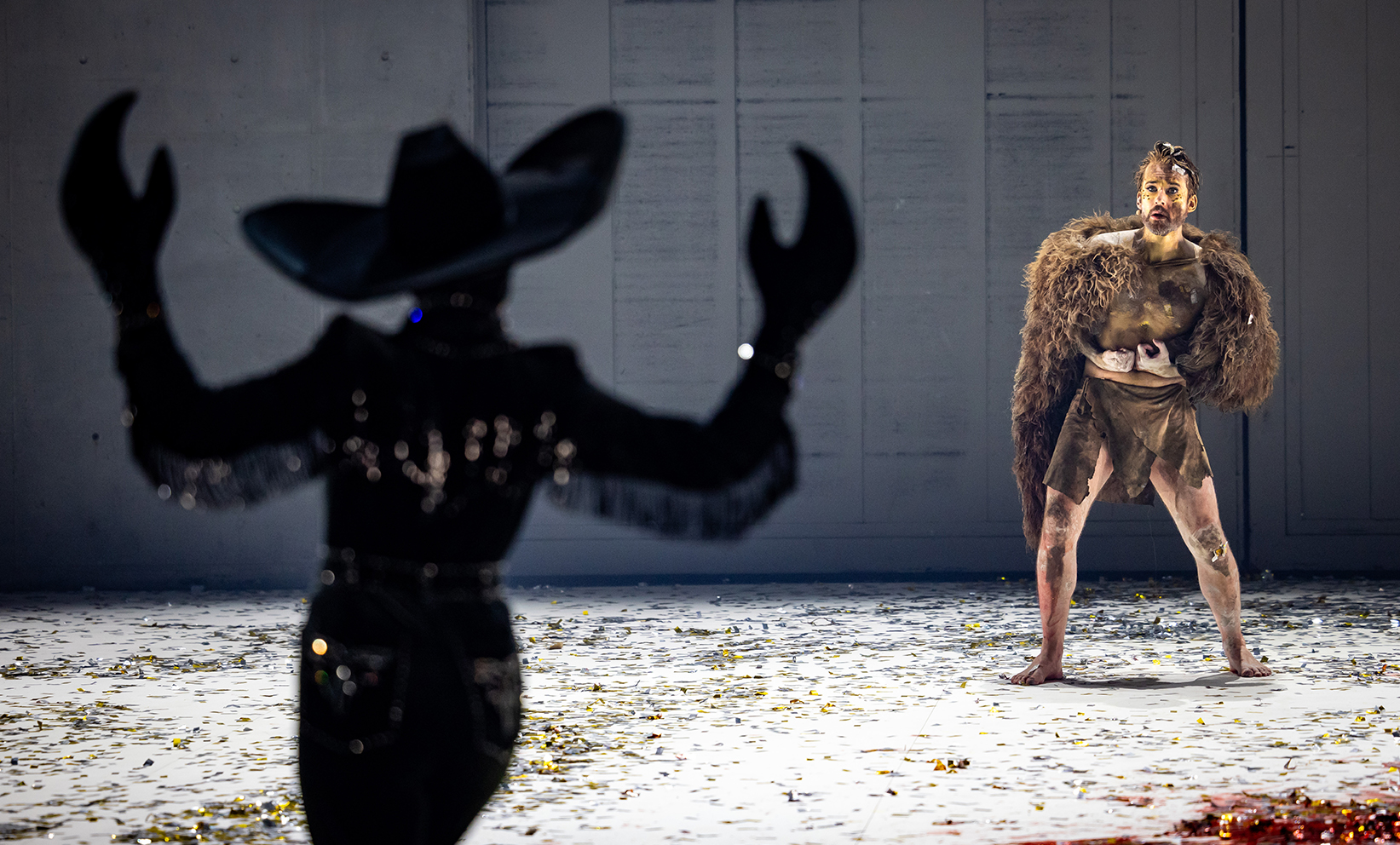
However, it wasn’t until 2021 that I finally set some text that Louis had adapted from the Epic, for a short song cycle commissioned by Phoenix Central Park. It breaks parts of the Flood narrative into three distinct songs, ending with a very slow ‘vision’: “I saw the face of the earth. There was nothing other than silence. All was turned to clay”. I remember precisely where I was when I found the notes for the phrase ‘I saw the face of the earth’. I was sitting, waiting for a Covid PCR test in Redfern when the simplicity of the gesture and the harmonic implications of this very basic material suddenly turned the key, opening vast tracts of musical territory to me. I instantly became very excited by the idea and somehow knew then how huge portions of the piece would pan out even though they would only be finished years later.
I immediately wrote a set of piano nocturnes and a solo viola sonata – small-scale, personal testing grounds for other Gilgamesh-related ideas. All of these have found their way into the opera, with an entire movement of the viola sonata forming a virtuosic obbligato to the goddess Ishtar’s ill-fated attempted seduction of Gilgamesh in the fifth scene.
The next major determining factor of the musical world of Gilgamesh then came over summer 2021/2022 when I received a commission from the Australian String Quartet (ASQ) for a big new string quartet. I was very deep in the planning and sketching of a lot more of Gilgamesh’s material by then, but it was in a highly volatile state; it didn’t have a fixed instrumentation, duration or form – it was like a kind of inchoate lava, incapable of behaving in a rational way, no matter what I did to it. However, I felt sure its essence was ‘right’ for various scenes, characters, motifs and philosophical/existential ideas I needed to create in the opera.
Conceiving and composing the string quartet naturally fused with many of these remaining Gilgamesh ideas, bringing them into sharp focus, giving them a definite and precise character and affixing them to the colour of a string quartet—specifically the colour of the ASQ itself.
About 90% of the 20-minute string quartet found its way into the opera, spread throughout its duration. There is no chronological link between the unfolding of the quartet and the opera, although the small-scale flow of various sections is maintained in both. After hearing a performance of this piece by the ASQ in Canberra, I conceived an ‘alternate ending’ to it on the train trip back which I also knew would also be the ending of the whole opera, taking this long-conceived material into a barcarole that laps into infinity.
In the quartet, the characters of Ishtar and the half-human, half-animal Enkidu are explored thoroughly, even though the narrative sequences in the opera are totally re-made into an abstract instrumental form.
As soon as I heard the ASQ play the piece in rehearsal, I knew I had found the heart of the soundworld of ‘Gilgamesh’. It was hugely inspiring to experience this material coming vividly to life, and I wrote the rest of the opera with the ASQ’s colour and boundless virtuosity uppermost in my mind.
Writing for the combined forces of Australian String Quartet and Ensemble Offspring has meant that the instrumental lines have gained a complexity and detail quite different from those of an ‘Opera’ orchestra; each scene is focused around specific colours and notes which branch out like an arboreal system to encompass the enormous expressive shifts and character arcs in the Epic. At present, I simply can’t imagine this piece not being played by these people!
Balancing the mechanism and history of the genre (love duet, Triumphal Parade, arias of many kinds) with more extended vocalism, instrumental colour and electronic spatialisation is a fundamental part of the opera’s architecture. The addition of live electronics has allowed for a further layer of transformation: from the human to the fantastical/metahuman/eternal and back. Enkidu’s musical journey in particular begins with non-traditional vocal sound, synthesised with instrumental timbre, before being ‘humanised’ into learned singing. To do this, I have worked with the electronics designer and sound engineer Ben Carey who has realised two of my previous pieces. Ben has an acute understanding of my musical desires and I have written him a ‘part’ that requires him to capture bits of live sung and played music and work his magic to mutate them into sounds that take to a logical, superhuman extreme the organic nature of performance.

The final and most important factor was writing the roles for singers with whom I’ve worked closely for years. Conducting operas for months at a time with the same performers every day, I have observed close-up the fine grain of various singers’ voices and what they do best. Thus, the musical personalities and expressive proclivities of the five singers who are premiering this opera have been encoded with love and admiration into the fabric of the score.
Mitchell Riley sang the first ever note at SCO in my first opera Notes from Underground (2011) and has returned from his home in France year after year to astonish us all with his near-impossible physical and vocal skills. He was here last for my Voss-inspired solo piece The Shape of the Earth, where he embodied every note and gesture with a true mastery. Our collaboration has meant so much to me; we have genuinely influenced each other through years of working on different pieces, each seemingly more extreme than the last. In composing the character of Enkidu for him, I take him from the most bestial-sounding breaths to a kind of lyricism-by-degrees that marks Enkidu’s journey to humanity. The way Mitch has fused his voice and his bodily expression of it is the gold standard of a fully-realised performer.
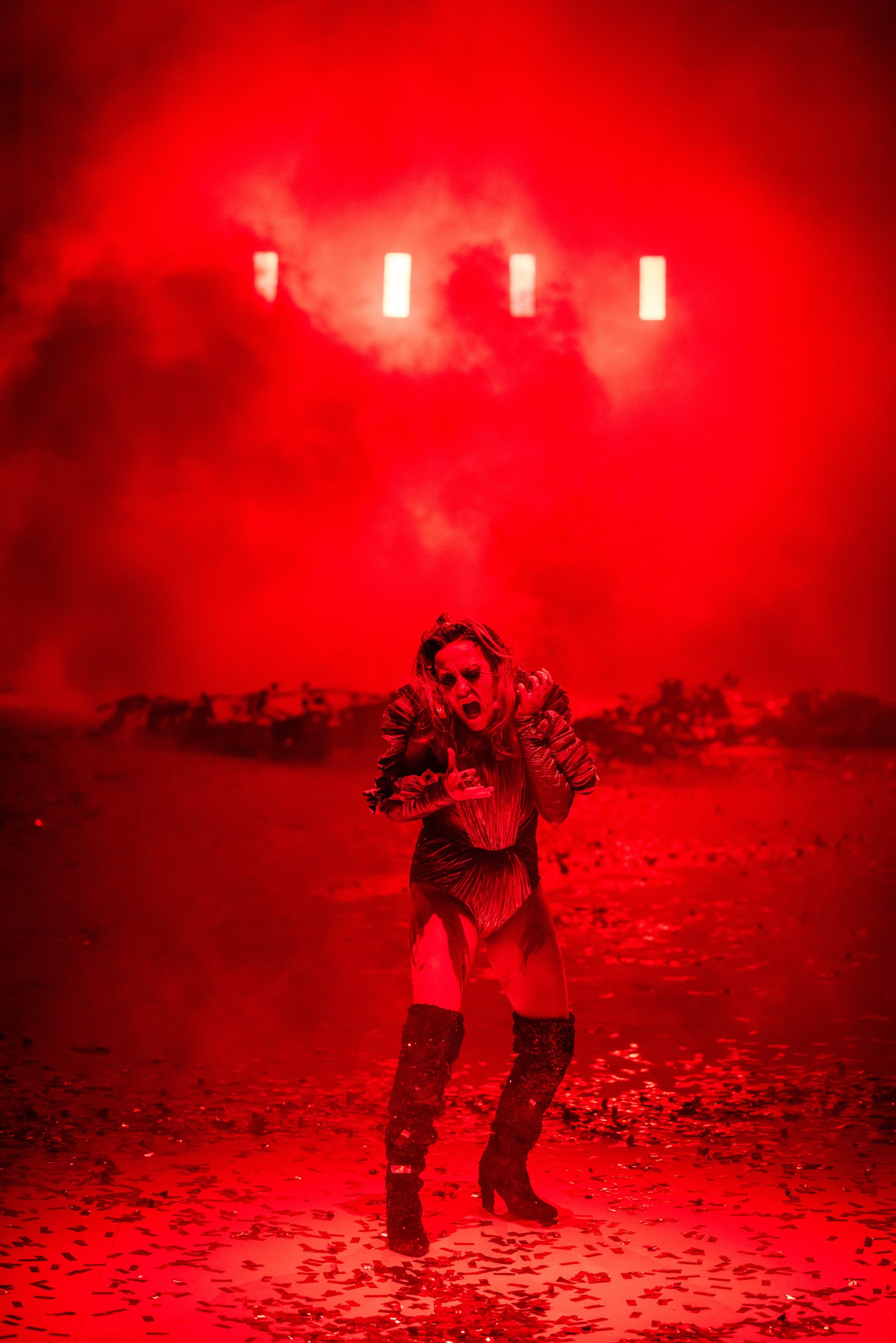
Jane Sheldon has likewise influenced my writing hugely, after working with her closely once she re-made Sydney her home after a decade in New York. From performing haunting one-woman monodramas to leading stratospheric ensemble writing, she personifies everything SCO stands for, and her sheer variety of sound has been in the back of mind for ages to explore in one single piece. In Ishtar’s huge scene which begins Act 2, I have attempted a multifaceted portrait of everything Jane does; the softest, purest, most ethereal writing evolves into earthy, passionate seduction, giving way to what I have termed the ‘Janewail’ in the score: ‘a continuous vocal ribbon of half-singing, half-screaming capable of every dynamic and register in a permanent glissando.’ I asked Jane to come up with a sound that could destroy a city and summon the Bull of Heaven… this is the result!
My close and intense performing relationship with Jessica O'Donoghue is also strongly represented in this score by having her play two utterly different characters. The sensual Shamhat, ‘taming' Enkidu into humanity with the force of her voice and body, and the mysterious Uta-Napishti, an eternal human singing forever on an island, delivering pronouncements about time and eternity. After years of giving up performing opera due its rigidity and ossified allegiance to the past, watching Jess re-find a part of her voice with SCO over the last decade has been a wonder to behold and she has been a close part of the family ever since. These two roles encapsulate everything I love about her singing and commitment to uniting it with physicality and character. Audiences won’t believe these characters all coexist within a single performer on the same evening!
It also happens that Jane and Jess absolutely adore singing together in complex, pristine harmony so it was a no-brainer to include them doing precisely that in the scene where Gilgamesh is confronted by two Scorpions who guard the Mountains of Mashu. But what should a Scorpion sound like? In this opera, they are backed up by a virtuosic percussion part of quickly rubbed-together pieces of Sandpaper (only narrowly avoiding starting a small fire from the friction) and an ‘insectoid wind’ of violins lightly running their fingers over the strings to find a kind of metallic shimmer. These Scorpions sing in strange intervals, as if ‘testing’ Gilgamesh to find the cracks in their harmonic armour.
Although this is Daniel Todd’s first SCO show, I am so pleased to be able to write for a ‘tenor who goes there’, as it were – someone unafraid to tackle the extremities of range, colour and expression with real physical engagement. After we worked on the Captain in Wozzeck, I knew I’d found the missing vocal ingredient of this opera. Creating the role of the monster Humbaba, I have his voice electronically live- processed and distorted, to which he has brought consummate artistry.
Dan is also made a very good point in rehearsal about a part that gave me immodest pleasure to compose – in the third scene, two Courtiers praise Gilgamesh over and over, demonstrating his tyrannical rule over the city of Uruk. They sing an invented ‘National Anthem of Uruk’, which acts as a giant chaconne throughout a long and complex scene, as if no part of the city can escape the grip of Gilgamesh-as-dictator. The National Anthem itself is founded upon a 12-note bass line, yet is entirely, almost garishly tonal on top. The result is a melody that is very difficult to sing and, as Dan pointed out, quite the opposite of the purpose of a national anthem which is meant to be able to be sung by the majority of the populace! The built-in strain of these poor Courtiers to ‘keep up’ with the shifting harmonic landscape has been most enjoyable to watch taking shape in rehearsal.
Last but certainly not least, Jeremy Kleeman, who plays Gilgamesh himself, is simply one of my favourite young singers in the world, and although this is ‘only’ his third SCO show, he already feels like one of our own in every artistic way. In this enormous role, I have tried to explore every facet of his voice, from its uncannily accurate and clear bass end to its resonant and plangent top. I knew that I needed the love duet between Gilgamesh and Enkidu to end on a unison note that was the ‘sweet spot’ of both their ranges: from my experience of Jeremy and Mitch, this note was middle C#, and I built the entirety of the fourth scene backwards from this moment of vocal harmoniousness. Gilgamesh has three big arias throughout the opera, each of which takes him further and further into vulnerability and break-down. A love song, a song of loss, and a song of failure. Knowing this, I plotted the topography of Jeremy’s voice and sent him on a journey that he alone could make. What he brings to his role absolutely floors me every time I hear him sing it.
Writing a large piece in such a specific manner has allowed me to push every one of the 16 performers on stage to their characteristic limits, and open myself up to explore all the things I love about music itself in one single work.
To shape air into sound, to propel sound into time, and to use the resulting music to interrogate life. These are any composer’s reasons for creating, and Gilgamesh has consumed and distilled years of thought into a vast, complex, impossible and human journey.
© 2020 Sydney Chamber Opera | Site designed & built by Anderson Chang
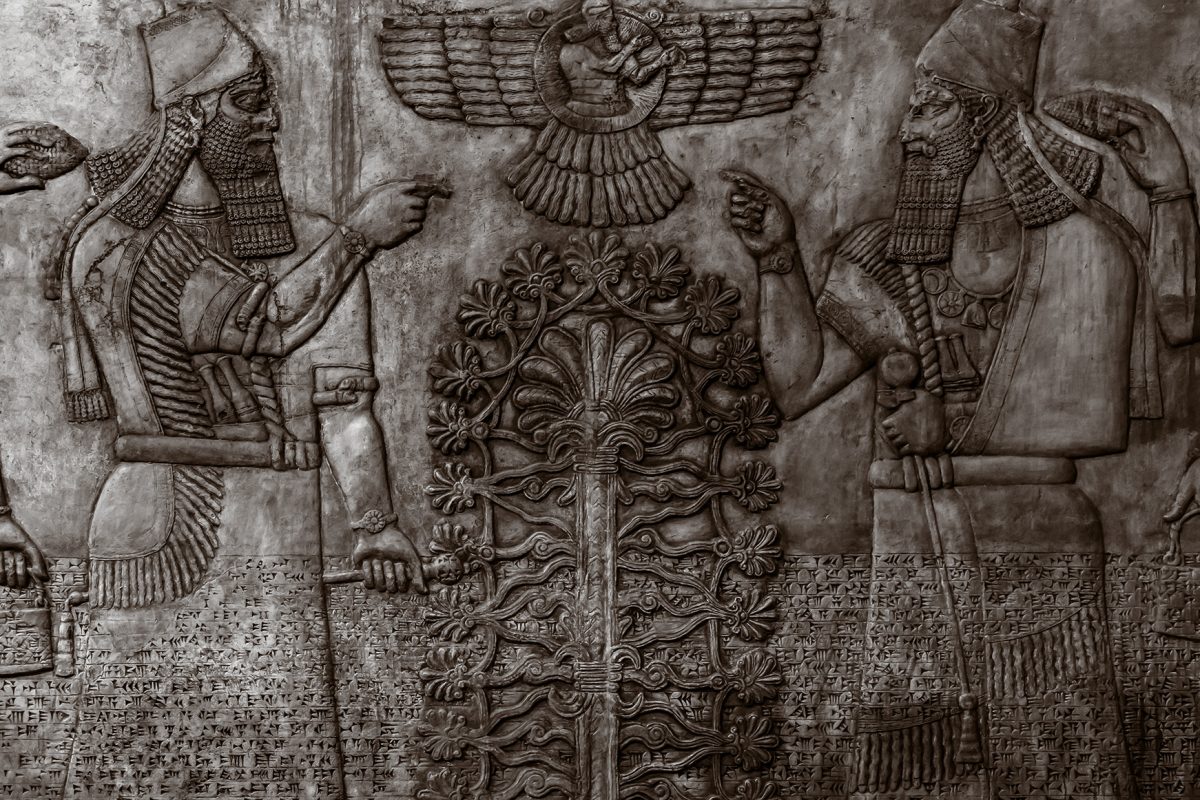
By Louis Garrick
Once upon a time, opera was a jewel in the cultural crown. For a certain echelon, opening nights were the hottest ticket in town. The divas were international celebrities and opera composers amongst the most revered artists of their time. When they built a new opera house, it couldn’t just be any old barn—it had to be an architectural masterpiece for the entire world to behold.
Those days are long gone. Over the past couple of decades, there’s been a tectonic shift in interest away from the classical arts, especially for younger generations. Once held up as an emblem of collective cultural achievement, opera is now considered, at best, an archaic curio, at worst, a symbol of something many Australians instinctively detest: elitism.
Make no mistake: opera is in crisis. The core audience of people who are genuinely interested in the art form, not just tourists and those dropping in for a special occasion, is vanishing. Costs remain enormous with orchestras and choruses to pay for and, with inflation, it’s not getting any cheaper. None of this is new, but the pandemic ripped the whole thing open. Governments, which had to bail opera companies out and continue to pick up half the bill, have been actively asking the question: should we really be funding something that appears relevant only to the privileged? Some have already made up their mind: look at what’s happened to the English National Opera and, now, even Berlin’s fabled Komische Oper faces an existential threat.
It’s not just the air of exclusivity that puts people off. It’s the operas themselves. A heroine, torn between two men, finds no solution but to throw herself off a bridge. A heroine, dominated by her controlling father, goes crackers. A heroine, having fled from an abusive lover, is punished for it by murder. Catch my drift? Even a seemingly immortal classic like Mozart’s Così fan tutte—loosely translated as “chicks be like”—is beginning to look like a creaky old thing whose place on the contemporary stage is dubious. And the usual retort, “Oh, but the music is so beautiful,” doesn’t really cut it with today’s audiences, who don’t care enough for classical music to excuse the oh dear factor.
Opera must change—and is being forced to. No one knows what the opera landscape of the future looks like, but it will probably involve a doubling down on what the Germans call alte Kamellen—old camels—like Carmen and Rigoletto, basically because they’re the ones the general public have heard of, plus ever more money-spinners in the form of Broadway musicals and the like, even though purists might not consider them opera at all. That might keep the industry going for now, but what about the art form itself?
One thing we can be certain of is that opera won’t die. Invented more than four hundred years ago, the art form has survived whole epochs; not even the societal and aesthetic convulsions of the twentieth century could knock it over.
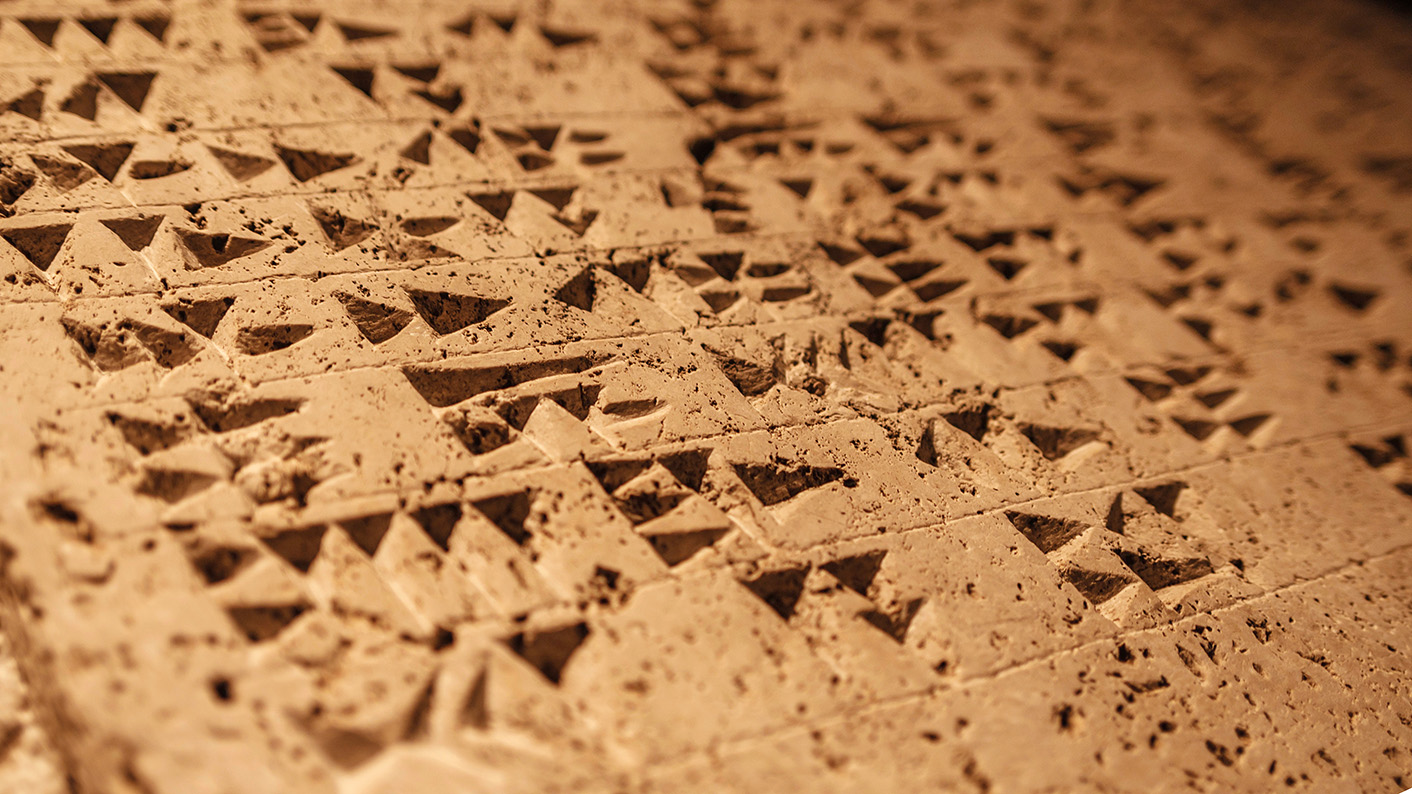
Here’s where Sydney Chamber Opera comes into the picture. Year after year, this small but heroic company puts new operas on the stage, thereby propounding ideas that actually address the fundamental question: what is the opera of tomorrow? And, because its productions are leaner in scale than a traditional grand opera, ticket prices are affordable, making opera accessible to those who don’t want to pay an arm and a leg for an evening at the theatre. Of course, there are different definitions of “accessibility.” SCO makes no bones about dwelling at the pointy end of artistic endeavour—but that’s what makes it special. It is unflinching in its commitment not to entertainment, but to beauty.
One thing we can be certain of is that opera won’t die. Invented more than four hundred years ago, the art form has survived whole epochs; not even the societal and aesthetic convulsions of the twentieth century could knock it over. Not that it hasn’t evolved over the centuries: a Handel opera with its da capo arias is nothing like the Gesamtkunstwerk of Wagner, let alone one of Kaija Saariaho’s recent masterpieces. It’s not one style or the other, it’s the idea of opera that’s durable.
Let’s think about the art form’s beginnings in the Italy of the late Renaissance. As part of the humanist preoccupation with bringing Greek antiquity closer to the centre of intellectual life, opera’s originators set out to revive antique drama and perform it the way they believed it was originally intended: with music. Indeed, much of ancient Greek poetry was sung and performed either by wandering bards or to the accompaniment of a lyre, hence the term “lyric poetry.” The kernel of opera—that citizens come together in a place where, like gods, they can watch on as mortals expose their best and worst instincts and act out their—our—most passionate behaviours in a performance involving language, music and all the expressive possibilities of the human body—goes back thousands of years. Coming as it does from the roots of Western culture, it is an idea that will always be relevant.
We don’t know what ancient Greek music sounded like. That’s why the early opera composers couched these timeless stories, of Orpheus, of Odysseus, of Medea, in the music of their time. And this is exactly what we are doing in Gilgamesh. No, it’s not Greek. The originators of opera also turned their quills to Biblical, Roman and other historical subjects, much like the painters and other artists of the same era. Given that the Epic of Gilgamesh is an antecedent to the epics of Homer, had they known about it—the clay tablets on which it is engraved were lost until the nineteenth century—they might well have composed a Gilgamesh opera themselves.
Like those Renaissance pioneers, we, in making Gilgamesh, are collectively scouring what remains of the cradle of civilisation in search of clues as to what is truly universal. We ask: who are we? What does it mean to be human? We commune with those who have come before us. We listen. We learn. We swap notes. We certainly don’t always agree: thank heavens we don’t live in a society where, for example, women are literally the property of men, as was mostly the case in ancient Mesopotamia. The Assyrians also thought the sun was a god, and didn’t know where it went at night. But, for every feature of Gilgamesh’s world that isn’t recognisable to us, there’s something that is. There’s brutal questing for power, reflection on humanity’s relationship with nature, an obsession with the twin mysteries of sex and death. Moreover, the characters are driven by primary emotions like ambition, jealousy, vengeance, fear, grief and, of course, desire—is that not the stuff of opera? Is that not the stuff of human life?
It’s important to understand that we are not archeologists attempting to decode the beliefs and ways of an extinct people. We read what’s written on those clay tablets with contemporary eyes. Certain elements jump out at us that might not have for past generations, like Gilgamesh’s apparent homosexuality, while other aspects that have previously been dwelt upon, such as Gilgamesh’s spiritual struggle with mortality, recede somewhat into the background. What we’ve done is subjective. It’s a take, not a study.
We are also artists, not museum curators. We tell Gilgamesh’s story in our own words—that is to say, with utterly contemporary musical and theatrical language which makes the most of what Sydney Chamber Opera’s virtuoso performers have to offer (with some cutting-edge electronics thrown in), all refracted through the prism of contemporary queerness. Despite being based on the oldest written story in existence, Gilgamesh is absolutely a work of our times in that sense. But don’t worry, folks. It’s still very much a capital-O opera, with frocks, a triumphal march, a diva that makes a stunning entrance, a love duet, a tragic death scene and—believe it or not—a couple of tunes.
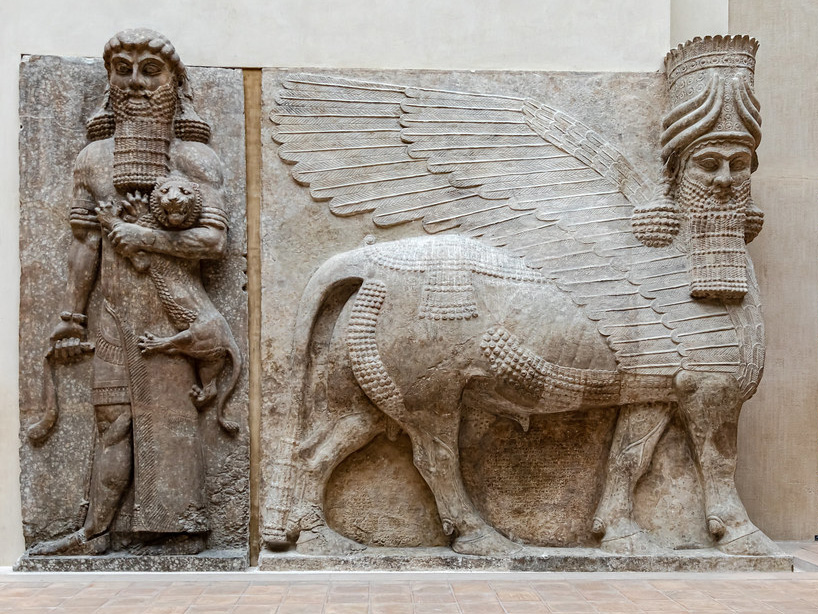
Now, what I was actually asked to write about was how I wrote the libretto. How, indeed, does one turn a long, highly episodic and very strangely proportioned poem that has a zillion characters and locations as well as whole chunks missing into a coherent piece of lyric theatre? Here goes. After reading the Epic in several different versions—Andrew George’s authoritative translation into English being the most pertinent—I sat down with the composer, Jack Symonds, and discussed the big picture: what does this mean to us and what do we want to say about it? I then set about grasping the emotional shape of the story, which guided me in decisions about what to keep and what to jettison from the sprawling text. Out of this came an embryonic structure from which, following a phase of learning about the historical context and further deliberation with Jack and others, I sketched the eight scenes that make up the opera. Here I must acknowledge the Berlin-based thinker and writer Jakub Stańczyk, who was an invaluable sounding board at this early point in the work’s development.
While writing, I always had several questions on my mind. What might the authors of the Epic have meant? How would the average millennial interpret what they wrote? How can this work on stage? Who will be singing this and how can I lean into their strengths as a performer? Most important of all, will these words and forms inspire the composer? On this point, I’m fortunate to have a background in music. It meant I knew exactly what tools were at my disposal: arias, recitatives, duets, choruses, and so on. And, during my time as artistic director of Sydney Chamber Opera between 2010 and 2015, I developed strong instincts for when and how to deploy them.
Out of this a draft came into existence. Writers and readers may be interested to know how many of the words are “mine” and how many come from the tablets via translations. The answer isn’t straightforward. As there’s little conventional dialogue in the Epic, many, many lines and several whole scenes are my own invention. On the other hand, I borrow a lot of specific phrases and imagery from the tablets, such as the suggestive description of Gilgamesh loving the half-man, half-beast Enkidu “like a wife,” and pretty much the entirety of the love-goddess Ishar’s song of seduction is zhuzhed-up version of what appears in the Andrew George translation. I mean, she tries to convince Gilgamesh to sleep with her by promising that all his goats will bear triplets if he does. How could I ever cut that? If I had to put a number on it, I’d say it’s 75% my own words—whatever that even means.
Then I sent the draft to Jack. After some back and forth as well as significant input from the director, Kip Williams, my work was done. Aspiring librettists take note: the words come first, then the music. And one of the peculiar features of writing an opera is that because music takes so long to compose, the text has to be completed many months or even years before anyone steps foot in a rehearsal room, with very little wriggle room for editing after the fact. There was a moment when I was having second thoughts about a scene which was supposed to be finished. I asked Jack, who had already written the music, “can we change this?” The answer recalled a hissing female cat fiercely protecting her young with tooth and claw. Luckily, we reached a happy compromise. As Barrie Kosky says, one must embrace the messiness of the process—and I can’t emphasise enough that while I had my own job to do making a blueprint for the team to work off, what the audience will experience is the result of a deeply collaborative chain of activity.
And that’s the nuts and bolts of it. Though, for my money, what really matters is not exactly how Gilgamesh was made, rather the spirit of the project—and the work produced. I’m put in mind of something the legendary American opera director Peter Sellars once said to a very youthful Jack and I between rehearsals of the Oedipus Rex he’d brought to the Sydney Festival years ago. “Our job as artists is simple,” he said. “See what’s not there, then put it there.”
Berlin, 2024
© 2020 Sydney Chamber Opera | Site designed & built by Anderson Chang
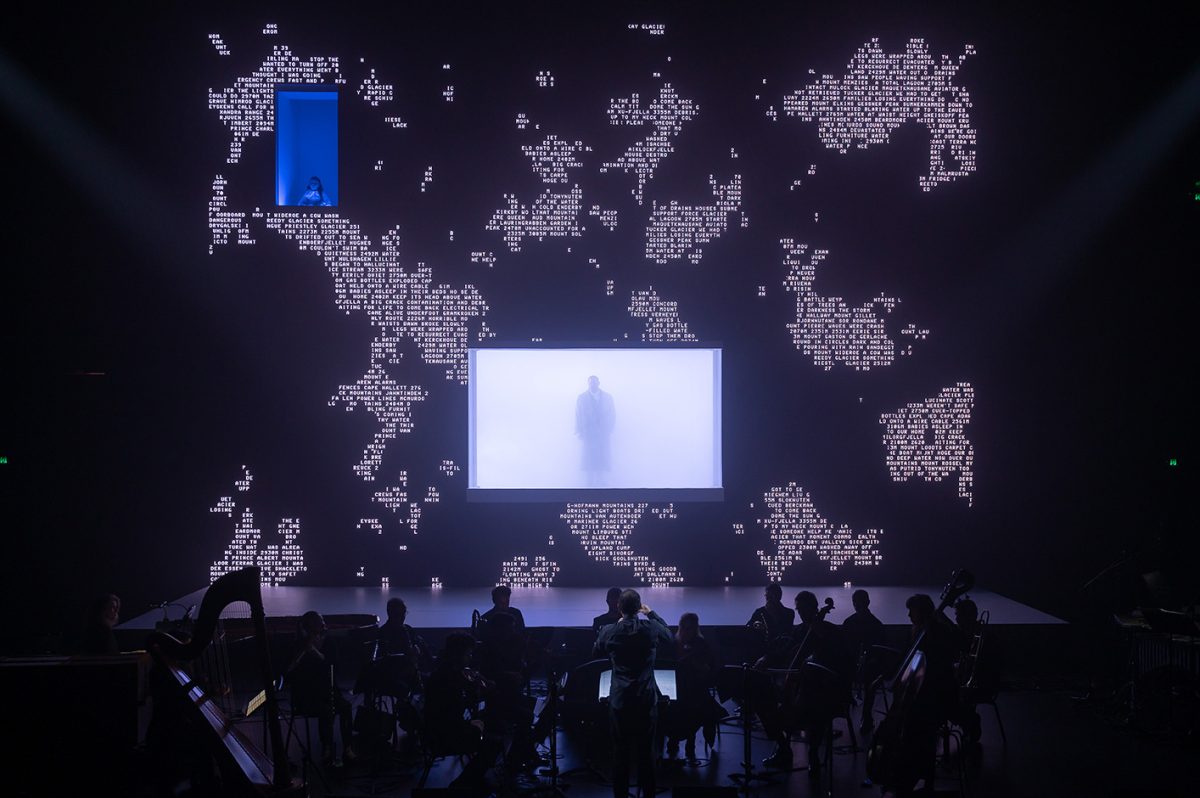
By Mary Finsterer & Tom Wright
Tasmanian Premiere
Sydney Chamber Opera and the Tasmanian Symphony Orchestra perform Antarctica in concert.
The South Pole is a realm rarely touched by human footsteps, shrouded in an aura of mystery and inaccessibility. Yet, within this frozen landscape, lie untold tales and forgotten histories, waitig to be unearthed.
Antarctica, a collaborative endeavour between Mary Finsterer, Tom Wright and Sydney Chamber Opera company, delves into the complex dimensions of the southern continent, blending historical, mythical and scientific narratives into a captivating musical odyssey. Through the outstanding compositions of Australian Finsterer, audiences are taken to an ethereal realm, where the allure of Antarctica unfolds through a fusion of classical and contemporary musical elements, weaving together the exploits of a cartographer, a natural scientist and a philosopher, each driven by their own aspirations and curiosities.
The genesis of Antarctica was a symposium at the University of Tasmania in 2017, where Finsterer and Wright collaborated with scientists from the Institute for Marine and Antarctic Studies, through the Creative Antarctica Program.
First performed at the 2022 Holland Festival and in Australia at the 2023 Sydney Festival, this is a rare opportunity to see this groundbreaking work for the first time in Tasmania with the Tasmanian Symphony Orchestra under the baton of Jack Symonds.
Conductor
Jack Symonds
Sound Design
Bob Scott
Singers
Anna Fraser
Chloe Lankshear
Simon Lobelson
Jessica O’Donoghue
Michael Petrucelli
Antarctica is commissioned by Asko|Schönberg, with the generous assistance of the Julian Burnside AO Trust for Mary Finsterer and the University of Tasmania. It has been supported by Carriageworks and Create NSW.
It was first performed on 5 June 2022 in Holland Festival, Amsterdam in a co-production of Sydney Chamber Opera and Asko|Schönberg, conducted by Jack Symonds, directed by Imara Savage and designed by Elizabeth Gadsby, Mike Daly and Alexander Berlage.
April 18, 2024
7:30 pm
Theatre Royal
Hobart
110 minutes (no interval)
© 2020 Sydney Chamber Opera | Site designed & built by Anderson Chang